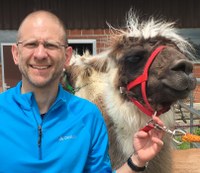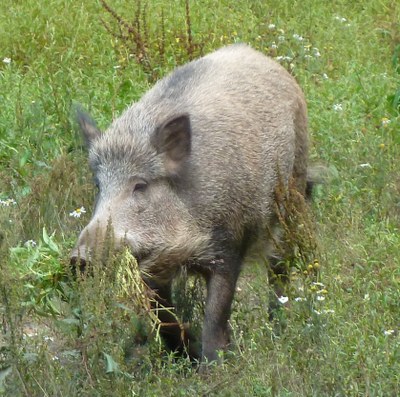
Branch
Comparative Vertebrate Ethology
in charge: PD Dr. Lorenz Gygax
Under this heading, we work on all aspects of proximate behavioural control mechanisms. We focus on mammals but amphibians, reptiles, and birds are considered for comparative purposes. The framework for our research questions is set by L. Gygax (2017) Wanting, liking and welfare: The role of affective states in proximate control of behaviour in vertebrates. Ethology 123, 689-704 (http://dx.doi.org/10.1111/eth.12655).
This publication identifies large gaps in the understanding of „wanting” (how motivations arise and how they are prioritised) and „liking” (reaching of goals with corresponding feedback on the motivation). Moreover, it promotes a comparative onto- und phylogenetic approach (see also E.S. Paul & M. T. Mendl, Animal emotion: Descriptive and prescriptive definitions and their implications for a comparative perspective, https://doi.org/10.1016/j.applanim.2018.01.008).
Therefore, we plan to address the following two sets of questions:
Wanting (Motivation)
• Experimental comparative ethology based on model species
The emergence and the prioritisation of motivations have been mostly studied in highly artificial choice tasks. Such experiments usually allow no more than two choices in a short-term situation. We will extended this approach in that model species are confronted continuously with a small-scal simulated but realistic and experimentally modifiable set-up allowing multiple choices.

In this context, „realistic” stands for a close resemblance of the true ecology of the species. Based on the choices of the animal, the strongest motivation at any one moment can be detected.

The set-up shall be shaped with the model species pig (an omnivore). Dogs and cats (predators) as well as sheep and goats (prey species, herbivores) will complement the model species in the future.
This choice is extended to birds or small mammals (rats).
The data that will be collected in these situations will be evaluated based on up-to-date and generalised sequential analyses (parametric survival analyses or frailty models).
• Epidemiological approach in comparative ethology
With the aim of putting the findings on the model species in a larger context, a database of behavioural sequences will be set-up containing as many vertebrate species as possible. Based on this data, the structure of behavioural organisation can be compared phylogenetically.
• Modelling of behavioural algorithms

Based on these two approaches dealing with „wanting”, algorithmic models of behavioural control will be developed. These models will be tested in the framework of individual-based models..
Liking (Goals)

In a second set of questions, experimental tests of liking will be developed. This aims at understanding what proximate goals are related to specific motivations. Reaching such goals satisfies the motivation (the „wanting”) and, therefore, play a major role in the feedback loop of behavioural control.
This issue shall be approached based on tangible practical examples from farm, companion, and zoo animals.
Current projects
To deal successfully with the new ideas for research described above, we
currently conduct several pilot studies.
► see also: https://fis.hu-berlin.de/converis/portal/Person/900636529?lang=en_GB
Former projects
► Measuring attention bias to assess farm animal welfare.
► Interplay of mood and stimulus valence on emotional cortical activation.
► Measuring emotional reactions of sheep in aversive and rewarding on-farm situations.
► Effects of housing conditions on social behaviour in cattle herds.
